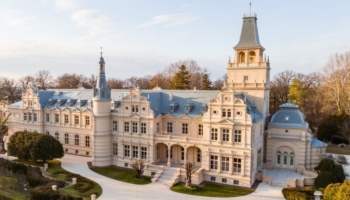Women of the Hungarian Revolution period
15th of March is the anniversary of the outbreak of the Hungarian revolution in 1848. As a form of commemoration, read on and get to know the role and fashion of women in 19th century Hungary.
Women
Women might not have been the protagonists of the revolution, but they certainly had a very important role in it. They were the backbone of their friends, boyfriends and husbands: they sometimes followed the men to the front, while the most determined ones even put on men’s clothes and took up swords!
Some of these women could happily welcome their loves when they returned home; however, some of them were not so fortunate and became widows due to the horrors of the war.
Some others followed their husbands into forced emigration. Some women had to face humiliation or even harsh prison sentences following the revolution, according to historian Zsolt Tamási.
Even though the rights of women were much more limited than they are now – for instance, they did not even have the right to vote –, they were expected to take part in the revolution, one way or another. Their tasks were to stand their ground at home, to encourage their husbands and to “raise their children to be good countrymen and countrywomen”, as we can read in liget.ro’s article. Women were also the ones who nursed the wounded, many of them even harbored refugees.
Women in politics
Naturally, women – of noble, commoner and bourgeois origin – were also highly interested in current issues of reform-era political life.
The more educated women even had a strong influence on their husbands at home. One good example is the wife of Prime Minister Count Lajos Batthyány: Countess Antónia Zichy who consciously guided her husband’s political career, according to mult-kor.hu.
Together with her sister, Karolina Zichy, they both played a key role in the transformation of aristocratic society in the Hungarian spirit. They led by example in the wearing of Hungarian dress, made Hungarian dancing fashionable at their balls, and made the Hungarian language presentable in the social scene through their demonstrative use of the language.
Countess Blanka Teleki consciously took on the role of an independent woman and entered public life. In 1846, she opened a girls’ education institute in the Hungarian capital, where Pál Vasváry, one of the outstanding young men of the revolution, enthusiastically taught young ladies Hungarian history.
On 15th March, the Countess herself recited the National Song to her pupils, according to mult-kor.hu.
Dresses
Lastly, some words about the various outfits of women of the period!
The style and colour of ball dresses depended on the number of times the lady has attended a ball. For instance, for the first ball, a girl always wore a white, frilly tulle or muslin dress. For the second ball, she could choose a pink, light blue, pale yellow or apple green dress, according to torimaskepp.blog.hu.
If the girl had already participated in numerous balls and was still single, she could wear yellow, red or purple dresses.
At formal dinners, dinner parties and the theatre, long-sleeved dresses were compulsory. At the wedding, the bride wore an ivory or white scalloped, frilly, long veiled dress. If the newlyweds went on their honeymoon immediately after the wedding, the bride would wear a dark-coloured, simple silk dress or suit and even say “yes” in it.

Read alsoThis wonderful Hungarian castle will soon be open to the public – PHOTOS
please make a donation here
Hot news
Probe launched into suspected foreign financing attempt in Hungary
VIDEO: What’s happening in Hungary? Food delivery rider on the motorway
ESG law strengthens the competitiveness of Hungarian businesses
SHOCKING: Hungary’s guest worker numbers exposed!
According to Minister Navracsics, this one policy will be priority of Hungarian presidency – UPDATED
Today only: Hungarian airline Wizz Air is offering cheap flights!










3 Comments
I was raised thru the Hungarian revolution. Don’t remember anyone wearing such clothing! Hungarian girls & women took great pride in embroidering all of their clothing, curtains, linens. Infact traditional regional patterns still inform modern fashions to some extent today. The photos shown look exactly like the historical dresses of Britain, southern US. Don’t know how I would have missed seeing any of these outfits. Considering that my grandmother sometimes took me to the home of The Gabor family when she went there to cook it is funny that I can only remember dark church dresses, simple ‘house dresses’ or beautifully embroidered full skirted dresses with eyelet edges at lengths easy to dance in. ‘Cus Hungarians sure loved to sing ballads, military songs, love songs & dance their sorrows away. My own parents snuck away one evening at the start of the revolution, leaving me behind while they made their way to Canada.
Dear Ilona, these dresses are from the late 19th century, taken from a period fashion magazine.
I would have liked to wear some of those! But I still would have wanted some traditional embroidery on them to make them distinctly regional. Sad I missed seeing my relatives go out to the local dances in those outfits. I often think I was not born at the right time.